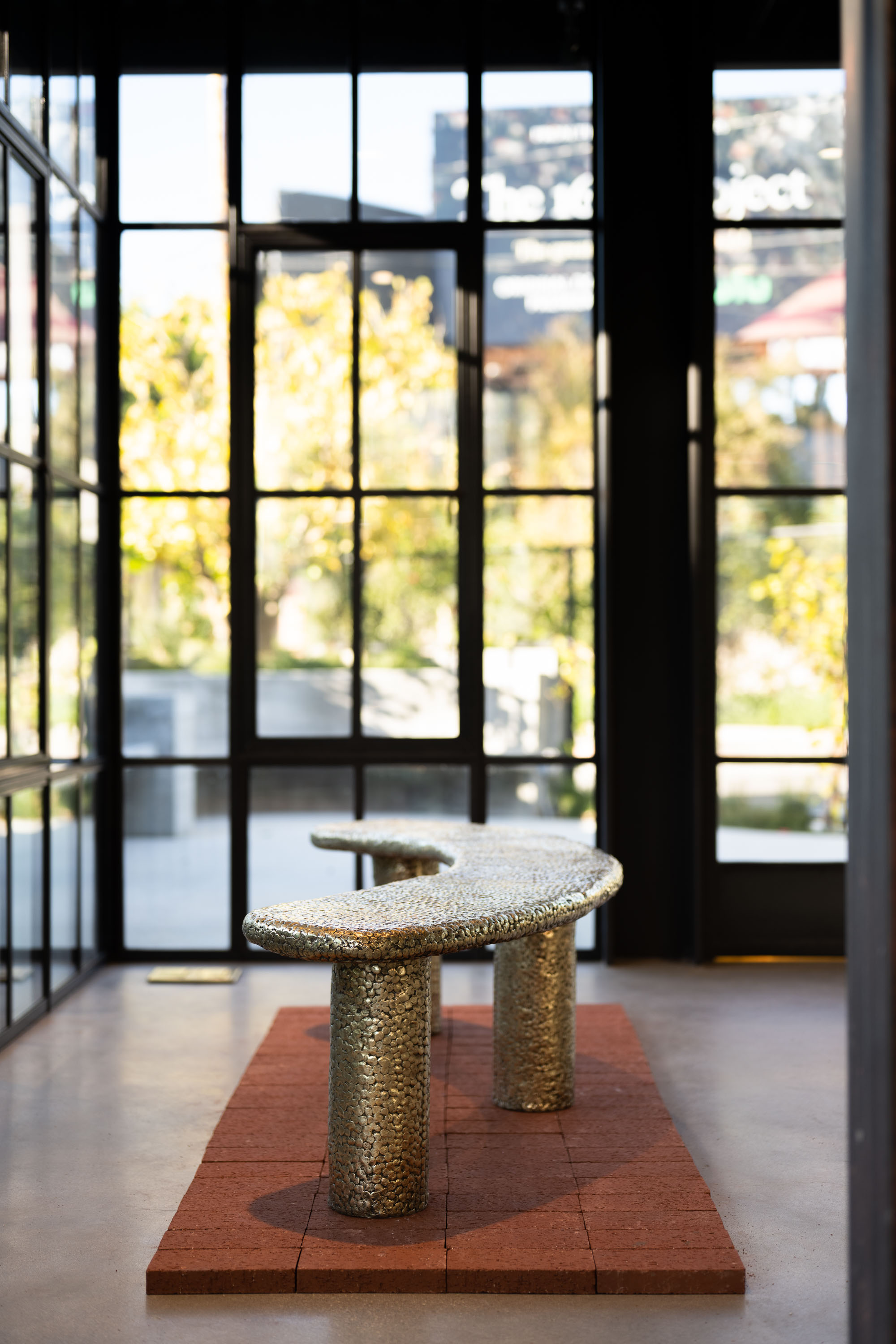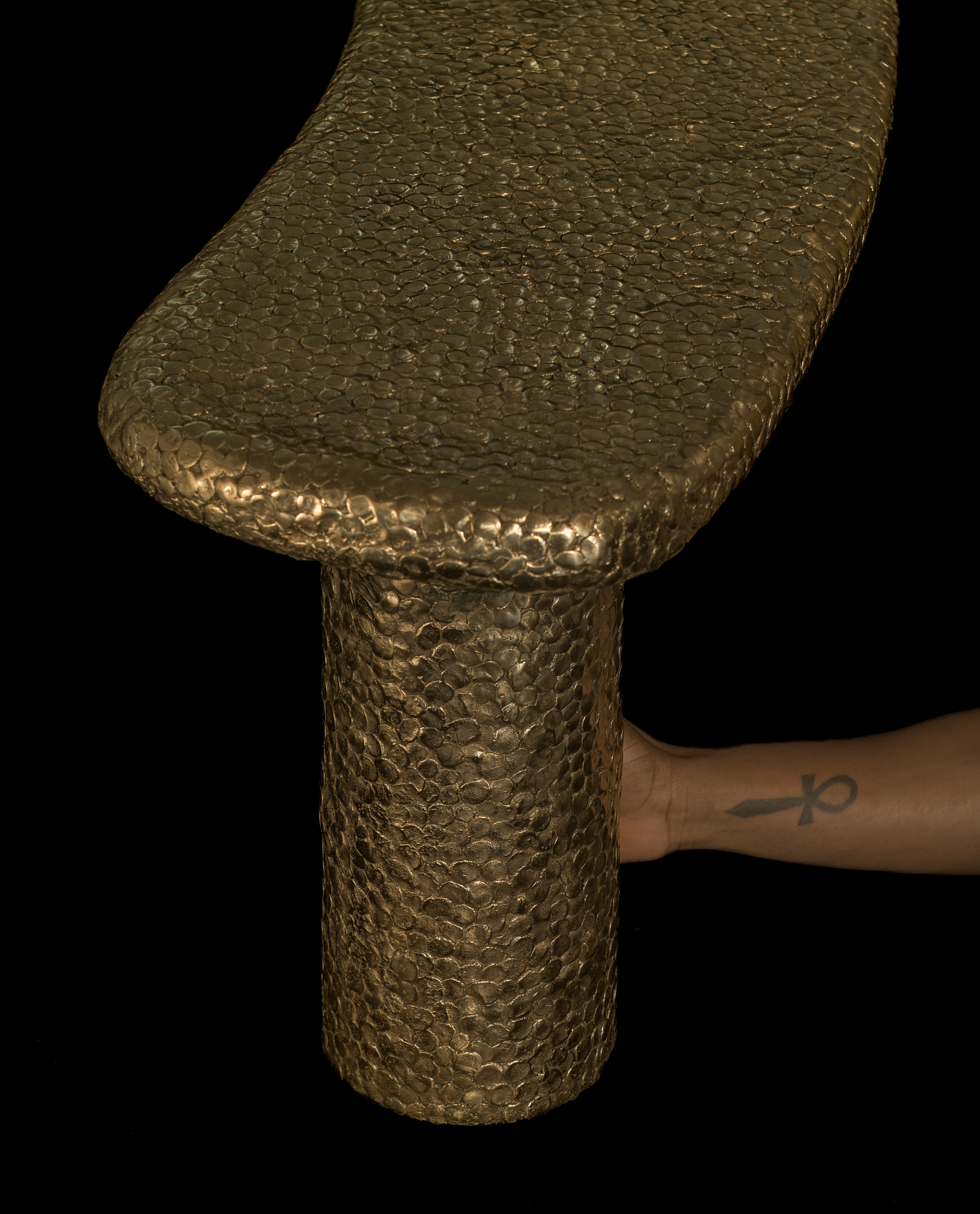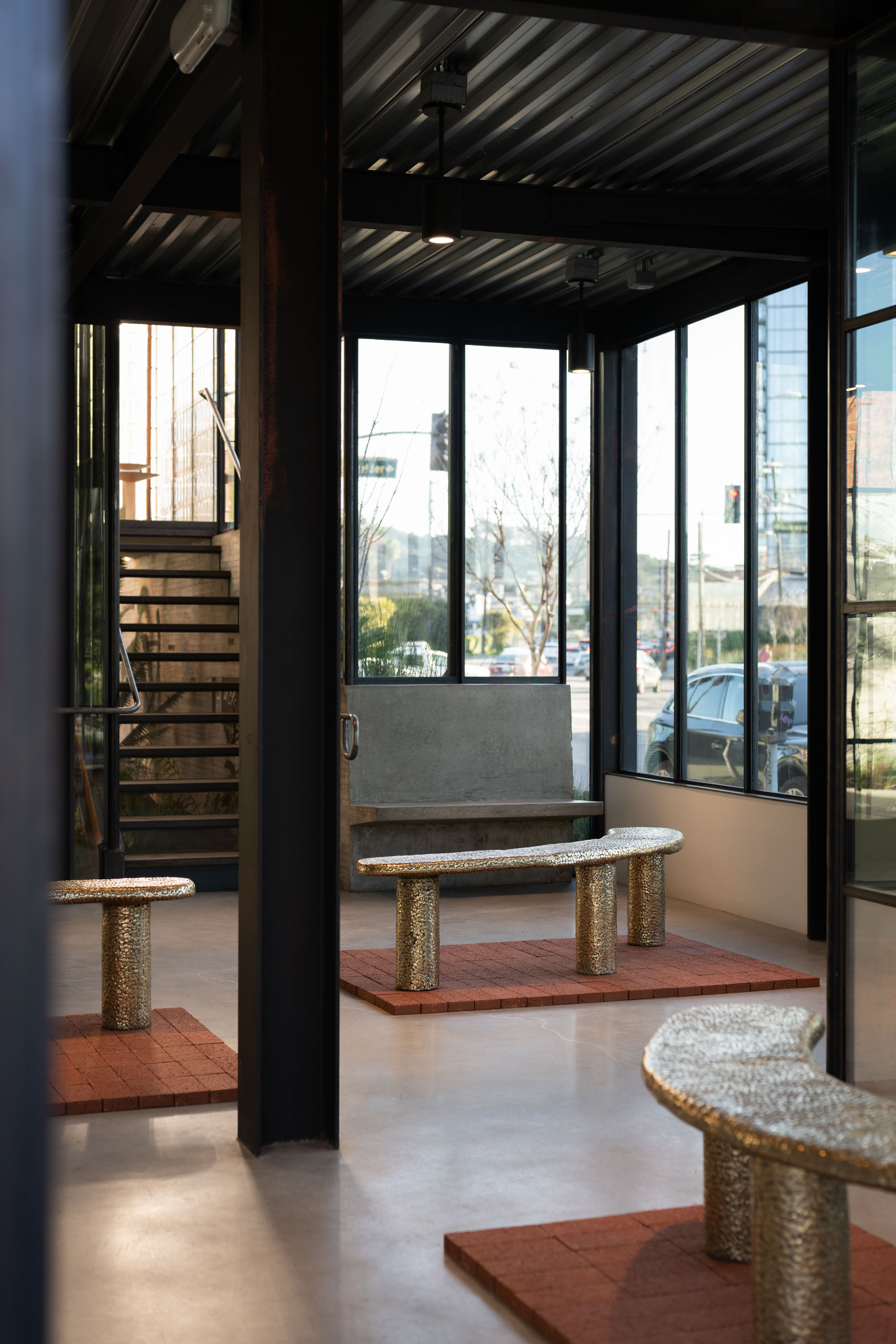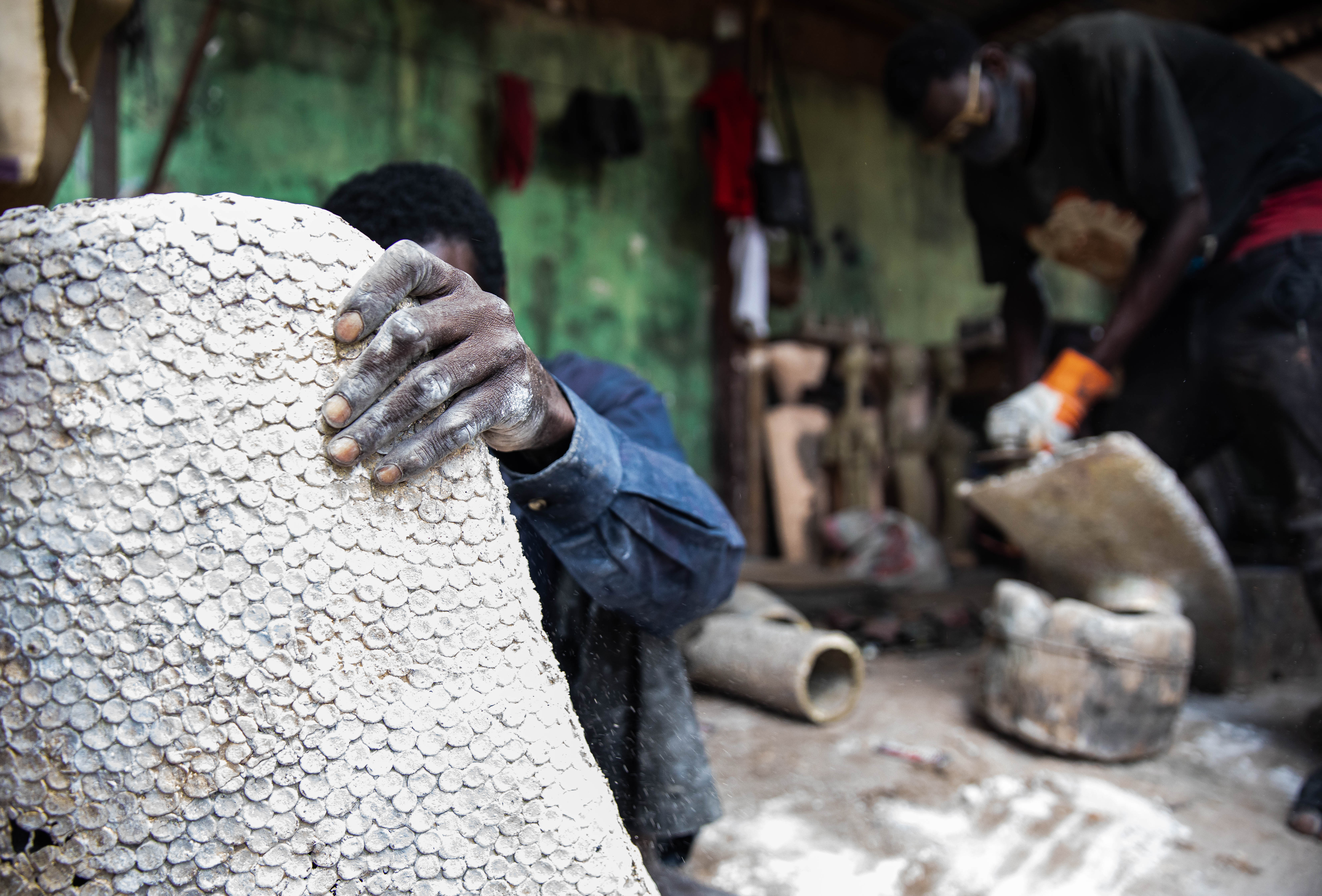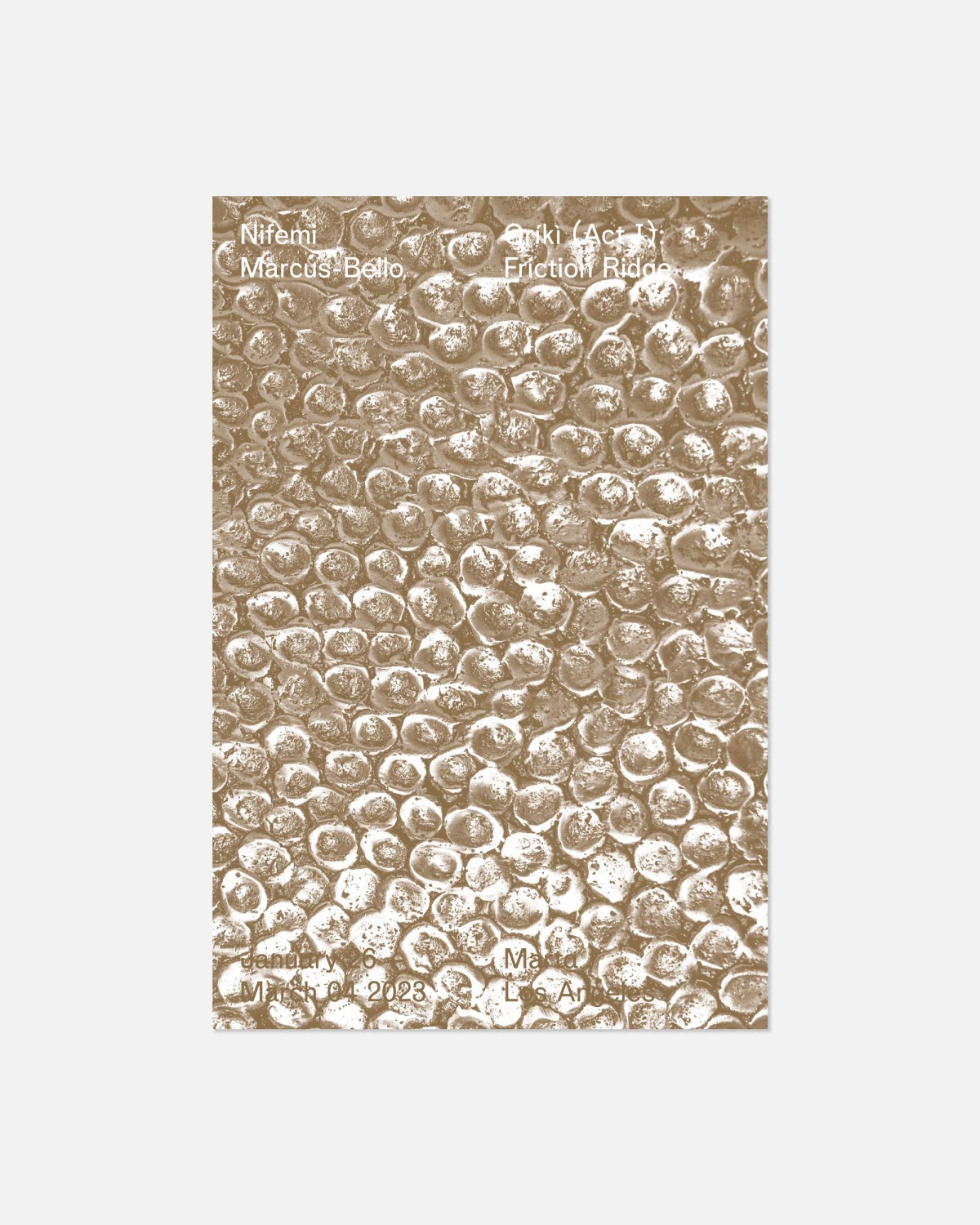Oríkì
ACT I: FRICTION RIDGE
Oriki is a design series by Nifemi Marcus-Bello that looks to investigate material evolution, production techniques and identify in the hopes to create objects, forms and experiences dictated and driven by the findings. The output of the series will be showcased through various themes, called ACTS.
Mart
a Satellite3050 S. La Cienega Boulevard
Culver City, California
90232 – 7333
Nifemi Marcus-Bello
Oríkì (Act I): Friction Ridge
January 26 – March 04 2023
Nifemi Marcus-Bello
Friction Ridge Bench, 2023
Bronze
71.6 × 17.7 × 24.4 in.
182.0 × 45.0 × 62.0 cm
Edition of 10 + 1 AP
Acquisition
The Art Institute of Chicago
Images by:
Erik Benjamins
kadara Enyeasi
Ọlájídé Ayẹni
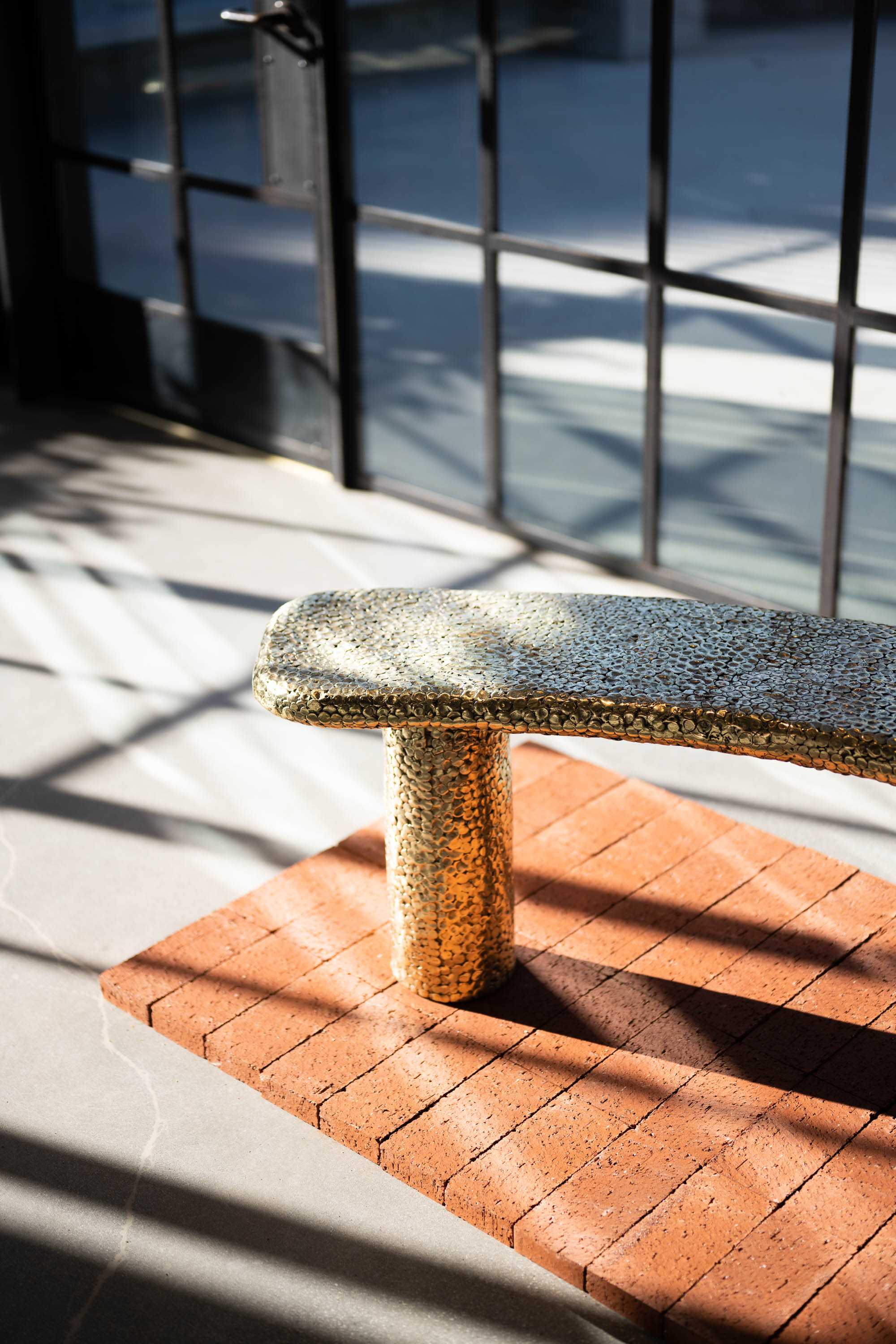
Act I of Oríkì—so named after the multi-generational practice of praise poetry and spoken affirmation amongst the Yoruba people and Yoruba-speakers of West Africa—presents an edition of sculptural benches rendered in polished bronze and exhibited amidst a soundscape featuring the voice of the artists mother, Folake, as she delivers Marcus-Bello’s personalised oríkì.
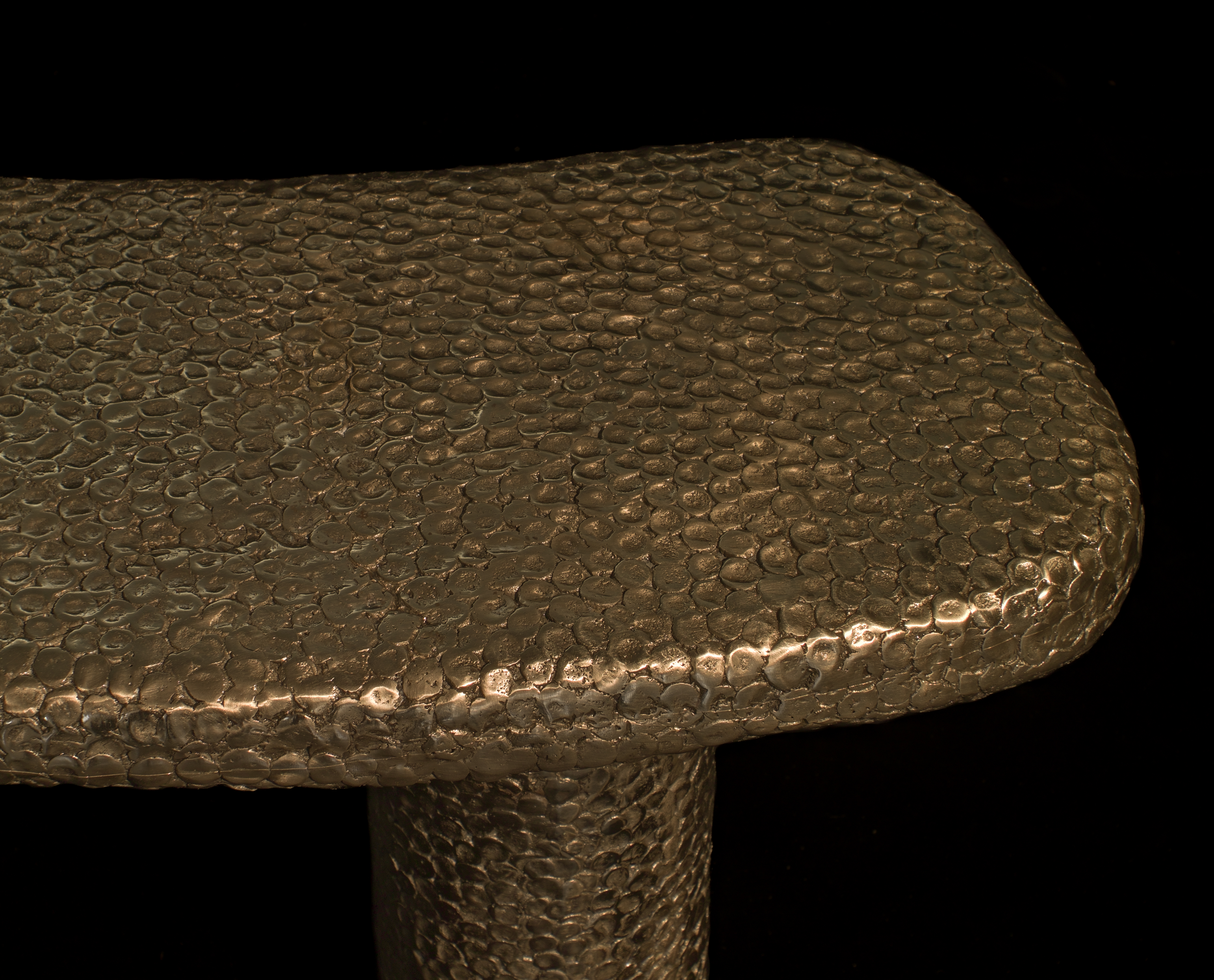
Eschewing the presentation of multiple work typologies in favor of the focus emphasized by the repetition of a single form, Marcus-Bello makes the physicality, texture, production process, and associated producer-craftsmen a vital part of these works’ outward legibility; indeed, the pieces are surfaced with the imprints of the designer and artisans involved in their fabrication.
Friction Ridge—the name of these functional sculptures as well as the title of this first Act—refers to the skin present along the lengths of the fingers and palmar surfaces of the hand: ridges and valleys used for the kinds of gripping and mechanical motions that Marta’s colleague, the ceramicist Alex Reed, refers to tenderly as ‘touch work’. Marcus-Bello cites as inspiration a tradition of the Surma people of Ethiopia, who paint themselves and one another using the repetitive imprints of their finger pads—an artistic expression as well as one of camaraderie.
Friction Ridge—the name of these functional sculptures as well as the title of this first Act—refers to the skin present along the lengths of the fingers and palmar surfaces of the hand: ridges and valleys used for the kinds of gripping and mechanical motions that Marta’s colleague, the ceramicist Alex Reed, refers to tenderly as ‘touch work’. Marcus-Bello cites as inspiration a tradition of the Surma people of Ethiopia, who paint themselves and one another using the repetitive imprints of their finger pads—an artistic expression as well as one of camaraderie.
Collaboratively fabricated between Lagos and Benin City, the pieces in Oríkì (Act I) are realised by way of the same lost-wax casting technique previously used to create royal portraiture in the former Benin Kingdom prior to the looting of many of those works by British occupants in the 19th Century. The recent repatriation of a number of these bronzes prompted Marcus-Bello to envision contemporary forms realised using historic techniques and regional expertise. The resulting bench works are multi-occupant seating sculptures composed not of straight lines but of gentle curves, gracefully proposing several sitters in reflective communion.


